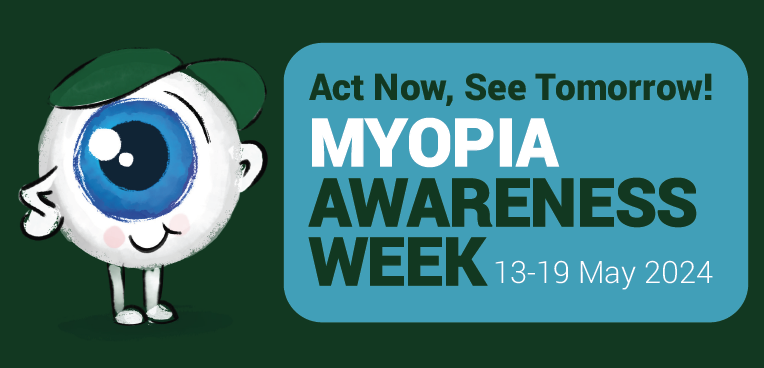 Sydney, Australia, 23 March 2017: You may have seen the stories in the news – the prevalence of myopia is growing across the world. A predicted 50% of the global population will have myopia by 20501. Numbers of people with high myopia are also predicted to rise sharply. Any level of myopia raises the risk of ocular complications and vision loss2. Fortunately, over the last 10 years there has been a growing body of evidence showing that myopia can be managed to slow the progression and reduce these risks.
Sydney, Australia, 23 March 2017: You may have seen the stories in the news – the prevalence of myopia is growing across the world. A predicted 50% of the global population will have myopia by 20501. Numbers of people with high myopia are also predicted to rise sharply. Any level of myopia raises the risk of ocular complications and vision loss2. Fortunately, over the last 10 years there has been a growing body of evidence showing that myopia can be managed to slow the progression and reduce these risks.
Practitioners are the gateway to managing myopia and improving future vision outcomes for their patients. However, a recent practitioner survey on attitudes to myopia management highlighted that close to 70% of practitioners are still correcting myopia with single vision lenses as their primary mode of correction3.
Stemming from this, the Institute created and piloted an online Managing Myopia course for optometrists, addressing the need to compile evidence and guidelines for myopia management into a concise, clinically relevant education program for practitioners. Our ultimate goal of such courses is to lower the global public health burden of myopia.
 Here’s what some of the optometrists that participated said:
Here’s what some of the optometrists that participated said:
Nicky from Lane Cove in NSW commented, “Fantastic course. Very relevant and exciting in that it actually changes the way I practice for the first time in many, many years.”
Jackie from Sunshine Coast in QLD also expressed her satisfaction and increased confidence after participating in the course, “This course was excellent in terms of content, relevance and the way in which it was presented. I have learnt a huge amount about managing myopia and my confidence has improved significantly.”
The course is an engaging, interactive learning experience, utilising videos, case studies and live webinars, and has been accredited for continuing professional development by Optometry Australia.
The pilot ran in February with the evaluation afterwards proving very positive. Our results showed 100% agreed the course was challenging and interesting, met with their expectations and was effective at achieving the overall aim.
The best result was that 100% have changed their myopia management practice and felt they gained greater confidence in myopia management.
These results indicate innovative online education programs such as Managing Myopia can successfully change practitioner attitudes and behaviour, and improve the skill level of optometrists in managing myopia.
Keen to join the myopia revolution? Click here to register your interest
References
- Holden, B. A., T. R. Fricke, D. A. Wilson, M. Jong, K. S. Naidoo, P. Sankaridurg, T. Y. Wong, T. J. Naduvilath and S. Resnikoff (2016). “Global Prevalence of Myopia and High Myopia and Temporal Trends from 2000 through 2050.” Ophthalmology 123(5): 1036-1042.
- Flitcroft, D. I. (2012). “The complex interactions of retinal, optical and environmental factors in myopia aetiology.” Prog Retin Eye Res 31(6): 622-660.
- Wolffsohn, J. S., A. Calossi, P. Cho, K. Gifford, L. Jones, M. Li, C. Lipener, N. S. Logan, F. Malet, S. Matos, J. M. Meijome, J. J. Nichols, J. B. Orr, J. Santodomingo-Rubido, T. Schaefer, N. Thite, E. van der Worp and M. Zvirgzdina (2016). “Global trends in myopia management attitudes and strategies in clinical practice.” Cont Lens Anterior Eye 39(2): 106-116.


